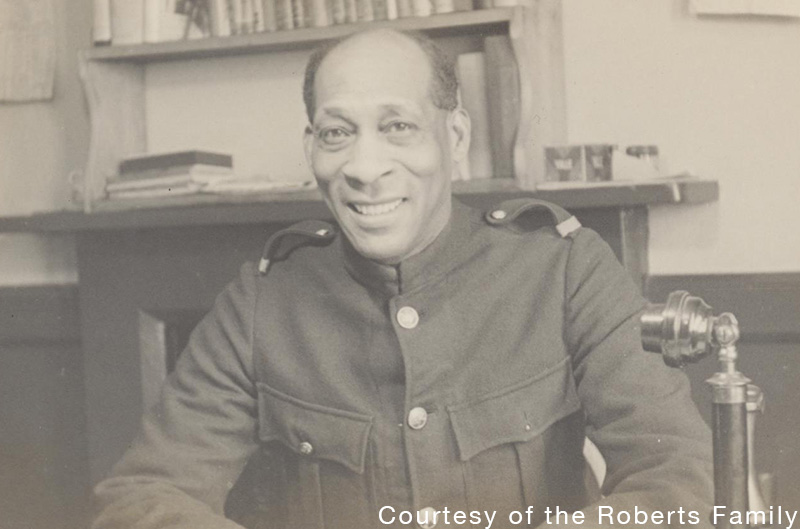There are many untold stories of Black and minority ethnic men and women who served in London Fire Brigade. One of the first of these heroes was George Arthur Roberts BEM.
George was born in 1891 on the Caribbean island of Trinidad. In the early 1910's George journeyed to England, and on arriving joined the British Army, fighting in the First World War.

George fought in the Battle of Loos, which took place on the Western Front between the 25th September and 13th October 1915. At the time, it was the largest British offensive of the war and witnessed Britain's first use of gas warfare. He later fought in the Somme offensive, where over 240,000 British and Commonwealth soldiers were killed or wounded.

During the fighting George was also wounded, and in 1916 was given special leave to return to Trinidad. Whilst there he was asked to recruit more volunteers for the Army. He did that and recruited 250 men.
Upon his return to England, he settled in London. He first lived in Peckham and then Camberwell, where George and his family lived for almost 50 years, until his passing in 1970.
Following the First World War, George Arthur Roberts campaigned with 'The National Federation of Discharged and Demobilised Sailors and Soldiers'. In the 1920's the various organisations campaigning for veterans’ welfare came together after the famous Battle of Westminster Bridge to become the Royal British Legion. George was an active member of the group from its inception. He would become the President and Founder Member of the Camberwell Branch and was made a life member of the British Legion in 1962.

In 1931, George was founding chairman of the League of Coloured Peoples. This was one of the first organisations to represent and support British Black communities, until it disbanded in 1947.

Too old to fight in the Second World War, in 1938 George was the first Black man to join the London Auxiliary Fire Service (AFS). In the war he served at New Cross Fire Station. During the London Blitz and throughout the Second World War he bravely continued to help extinguish fires and saved many lives.
In 1943, he became a Leading Fireman and was awarded the British Empire Medal (BEM) in 1944. This was for “… his general duties at New Cross Fire Station and for his part as a founder and pioneer of the Discussion and Education groups of the Fire Service.” The medal was presented by King George VI on the 15th May 1945 at Buckingham Palace.

In 2016 Southwark Council unveiled a Southwark Blue Plaque outside George Arthur Roberts’ former home in Camberwell. The event was attended by representatives from the Brigade, local MPs and the acting High Commissioner for Trinidad and Tobago. LFB Black and ethnic minority firefighters formed a guard of honour at the unveiling of the plaque.
In 2018 the London Fire Brigade commemorated George with a red plaque on a wall of New Cross Fire Station. The plaque was unveiled by his great-granddaughter, Samantha Harding.
Samantha Harding said: “It’s always overwhelming for me to attend these events, as it brings to light all of the incredible things he has done.”
Watch Manager Micky Nicholas added: “George’s legacy has led to there being members of Caribbean and other diverse communities in the Brigade today.”
This article was researched and written by museum volunteer Shilla P. With special thanks to Roberts’ Great Granddaughter Samantha Harding for her assistance with this article and kindly contributing the images on behalf of the family. The Roberts’ family have set up a website where you can continue to explore his life and legacy.